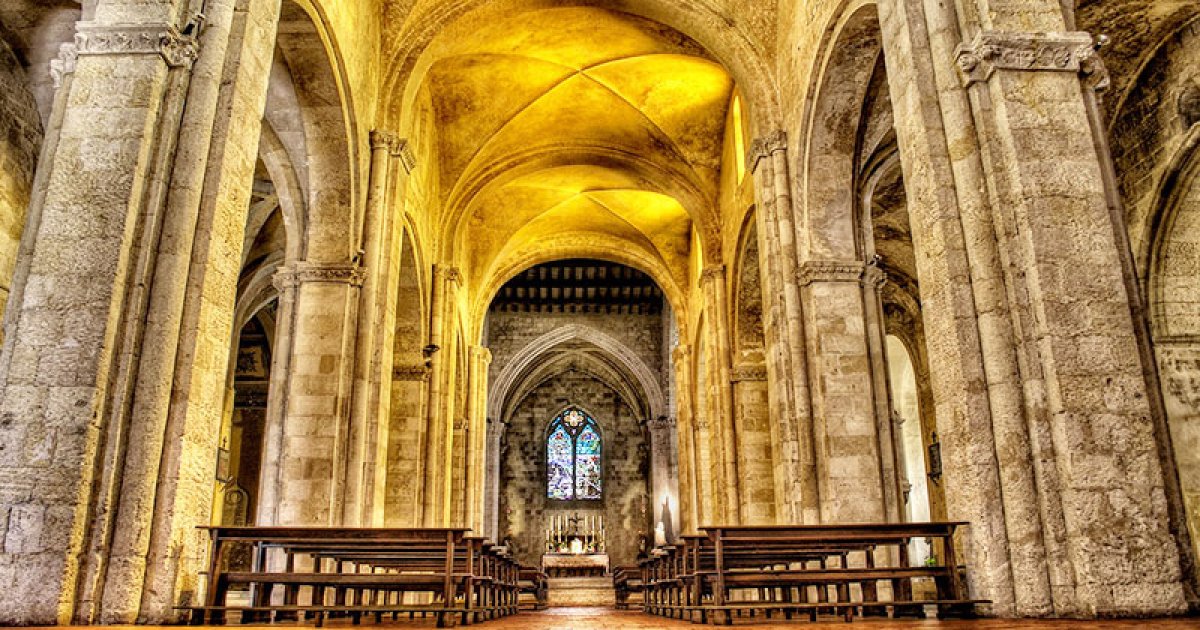CHURCH OF SAN FRANCESCO, Presentation
 Language: English / USA
Language: English / USA
The Church of San Francesco has a Romanesque facade, with Gothic elements, divided into three sectors with different heights; the highest is the central sector.
Adjacent to the church is the convent of San Francesco, which unfortunately is not open to visitors. The church has always been entrusted to the Franciscan Friars Minor.
The interior of the church, divided into three naves, is in mainly Lombard Romanesque style, with imposing pillars and high cross vaults. As you approach the main altar, you’ll notice that the chancel, dating to the early 13th century, features lighter Gothic lines, with three square apses and a ceiling supported by broad pointed arches.
Against the wall in the central apse is the large polychrome marble funeral monument to Cardinal Charles d’Angennes de Rambouillet, who died in Tarquinia in 1587.
In the chapel on the right, initially known as the Cardini Chapel and then as Falsacappa Chapel, observe the 17th-century painting by Pier Francesco Mola depicting Christ speaking to Saint Bridget of Sweden, and the stucco work with liturgical emblems alluding to the Passion of Christ.
Also worthy of note is the Antependium of the high altar. This decorative panel at the front of the altar is the work of the Cosmati family of skilled Roman marble craftsmen.
Now press pause and press play again when you come out of the church.
If you go down Via Santa Lucia Filippini in front of the church, you’ll find the well preserved house that was the birthplace of Santa Lucia, founder of a religious order. The house was later the home of the famous poet Vincenzo Cardarelli, who lived between the end of the 19th century and the middle of the 20th century.
Further along the road is Palazzo del Marchese, with an elegant Late Gothic-Renaissance facade.
The building is inside a courtyard with a well, flanked by Doric columns and crowned with a late Gothic balcony decorated with arches and covered with a loggia dating to the early 16th century.



